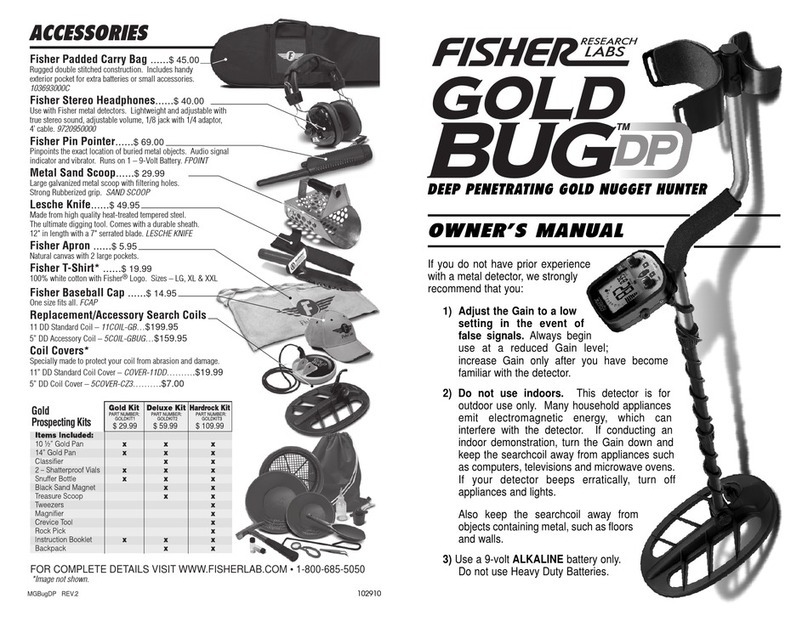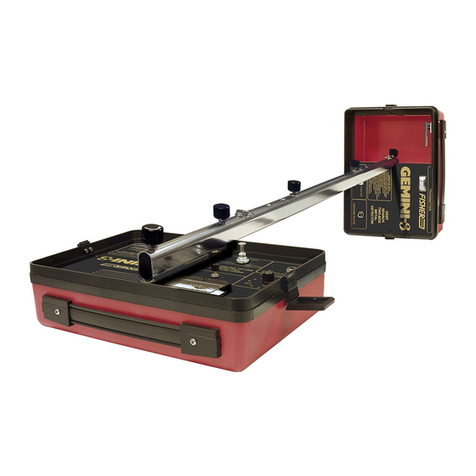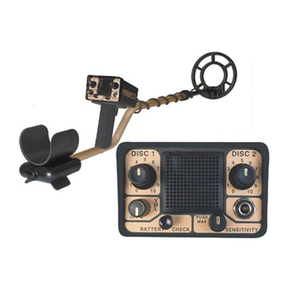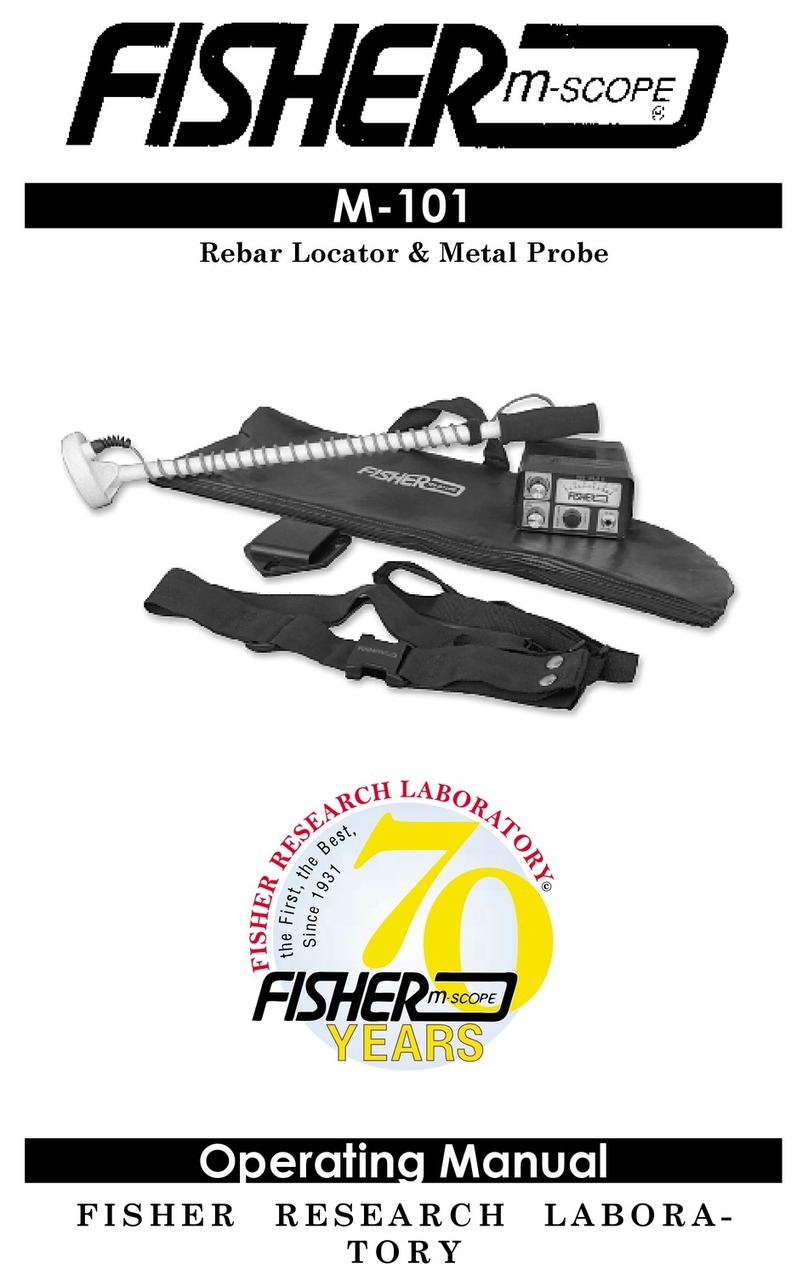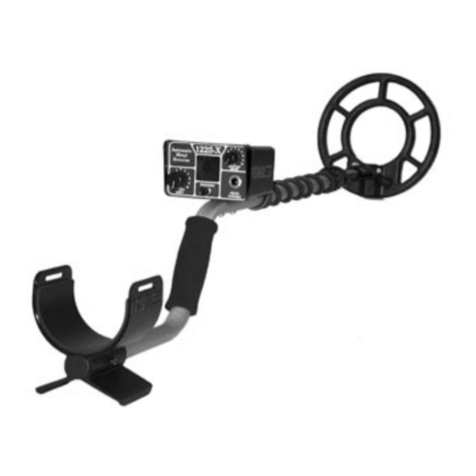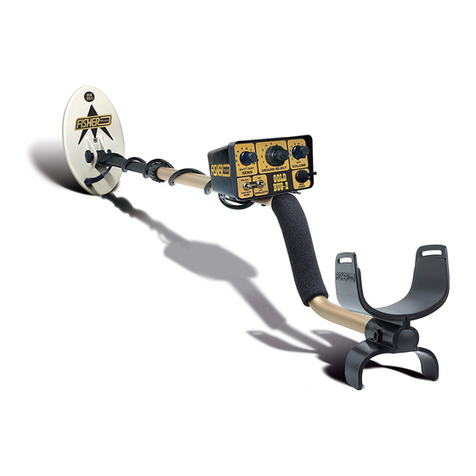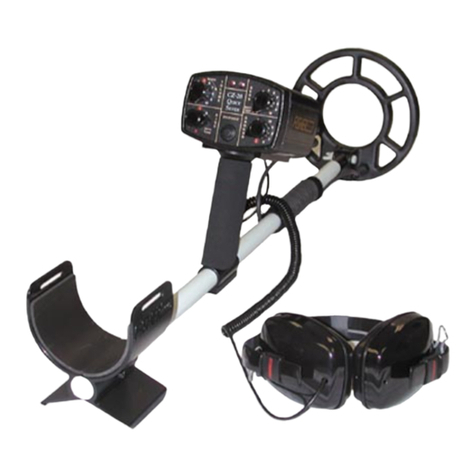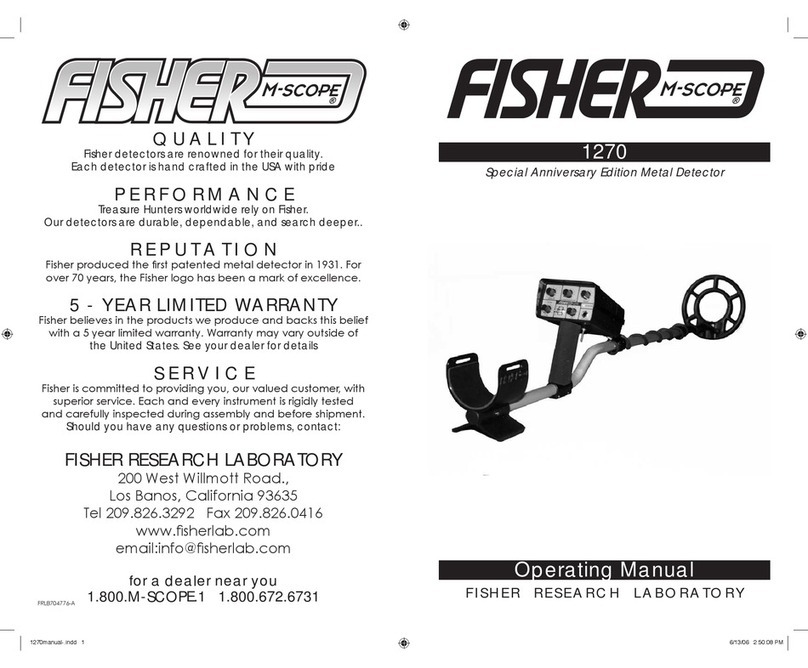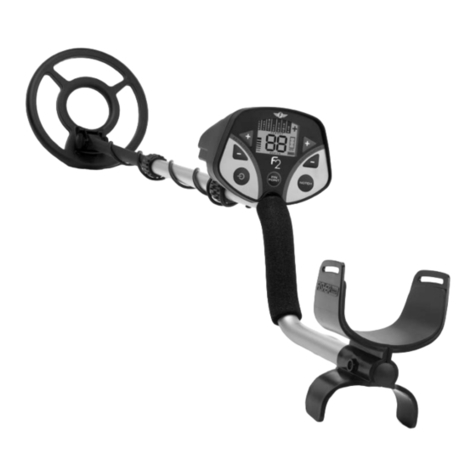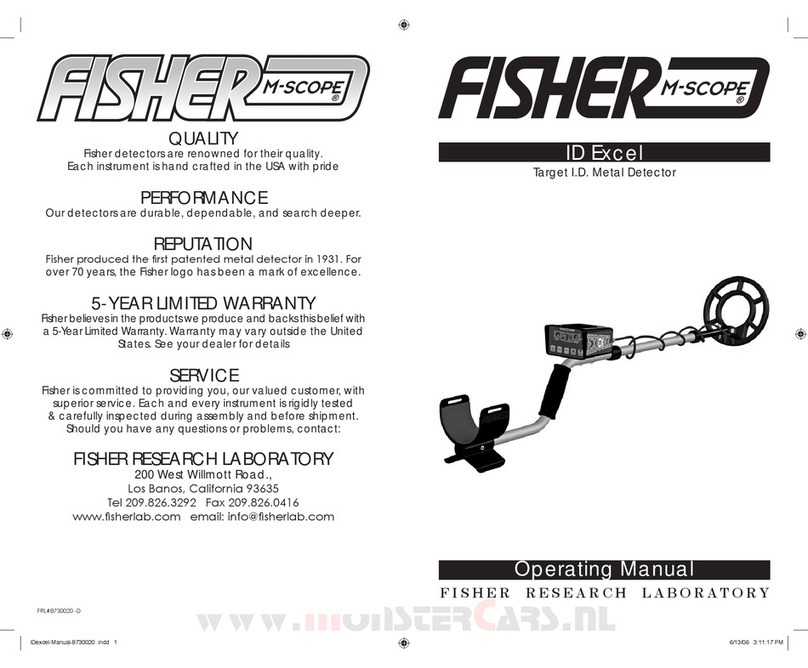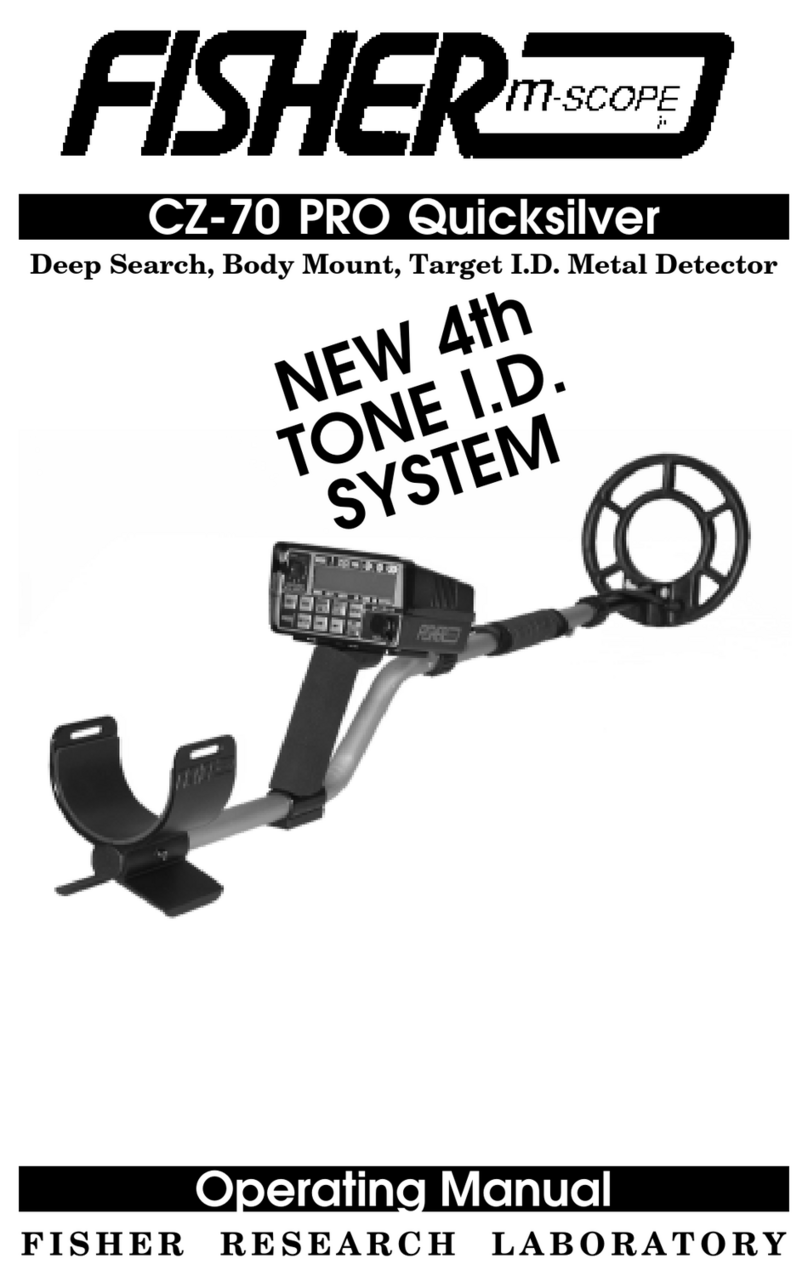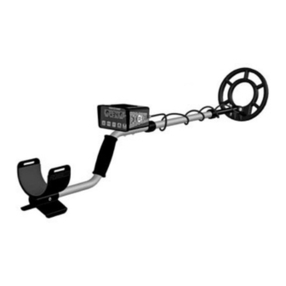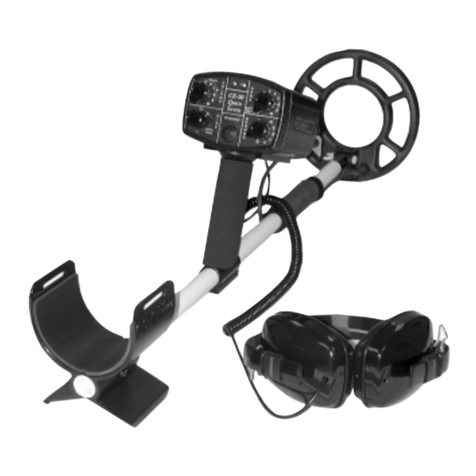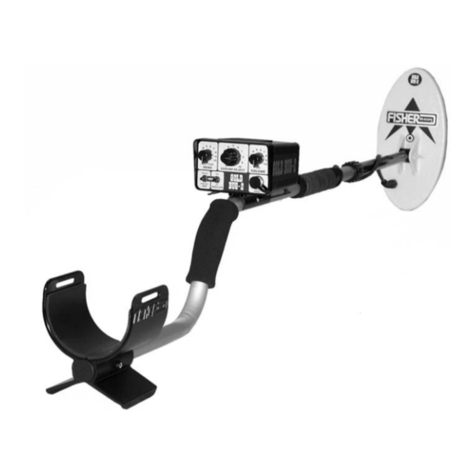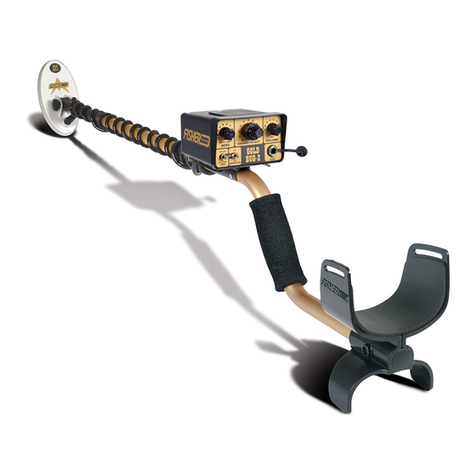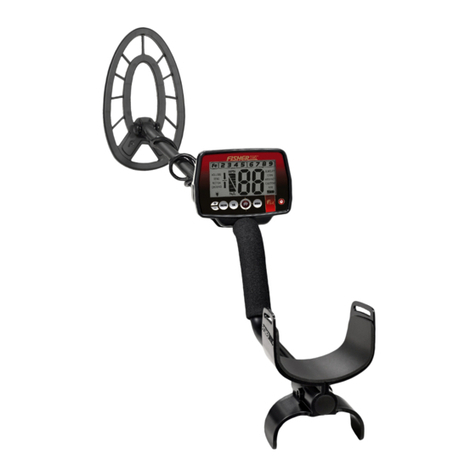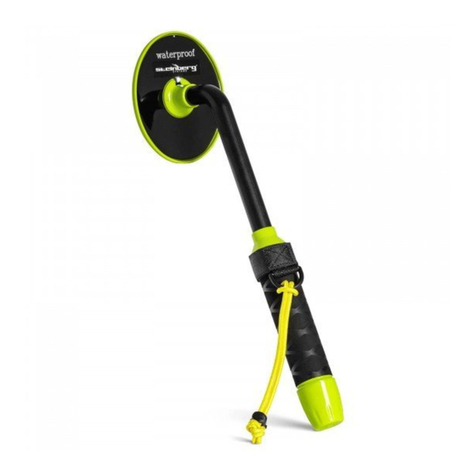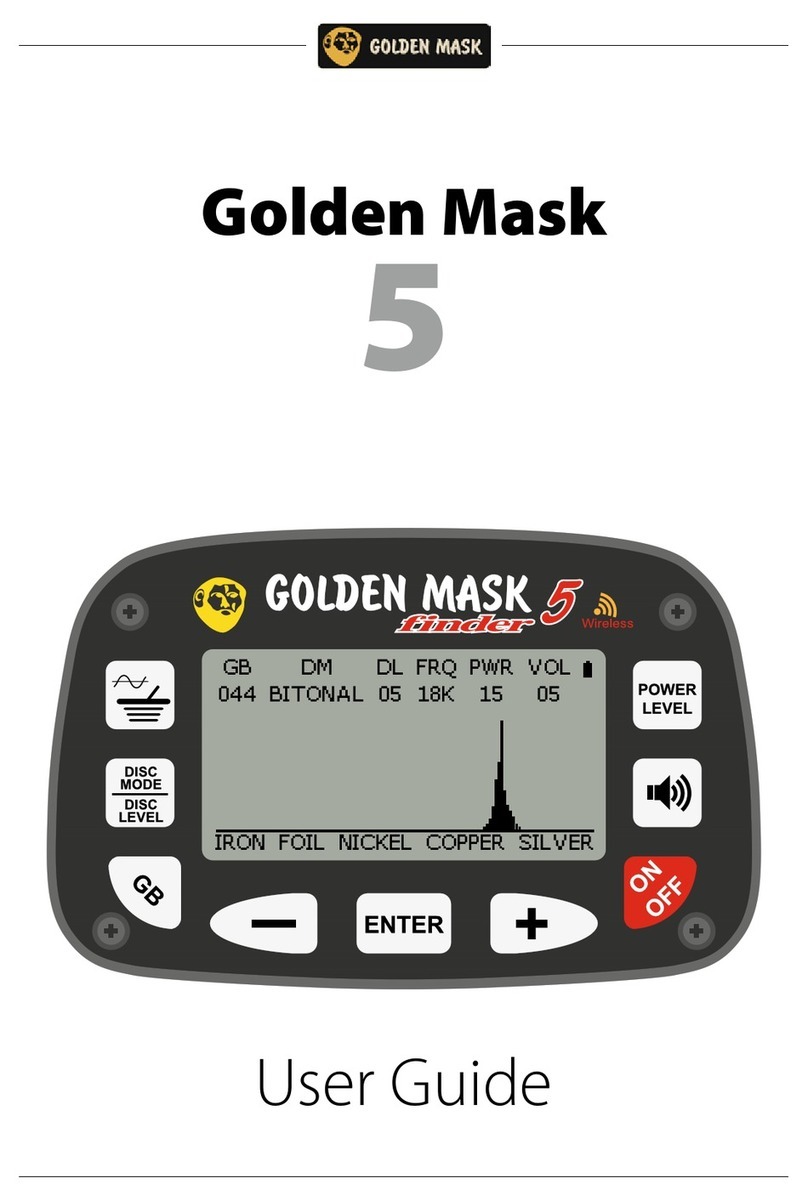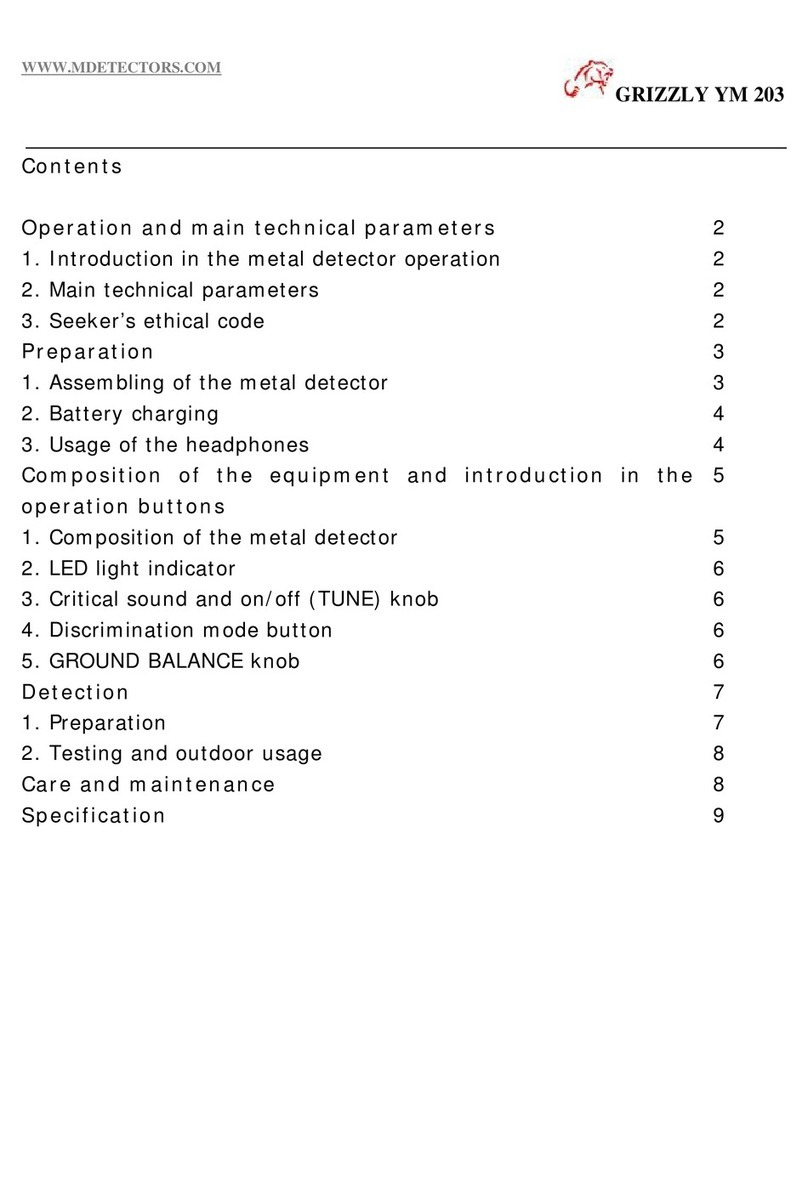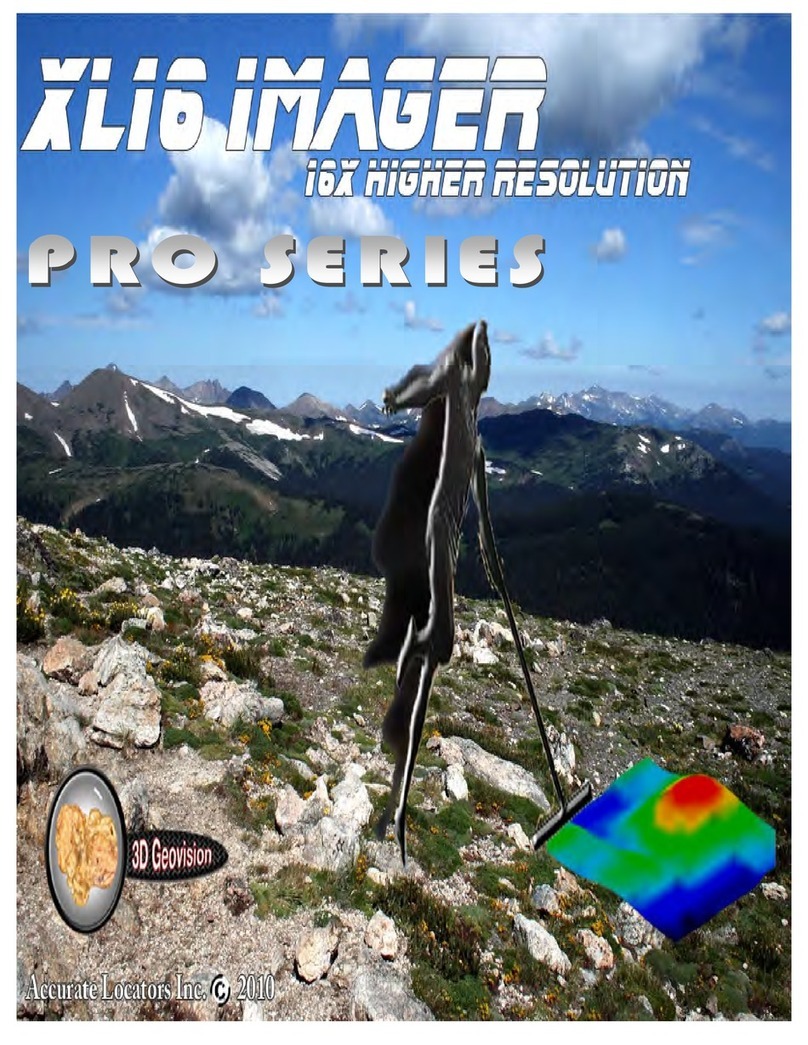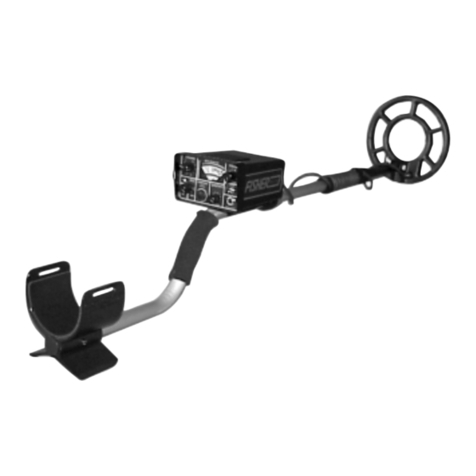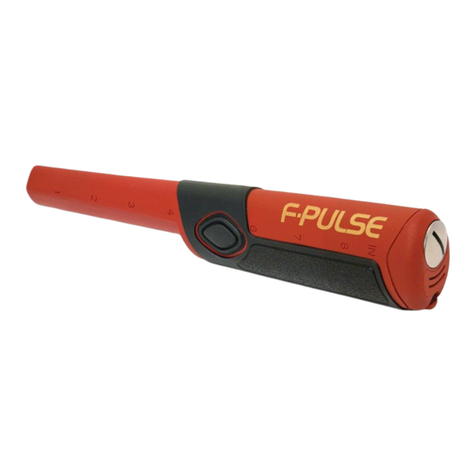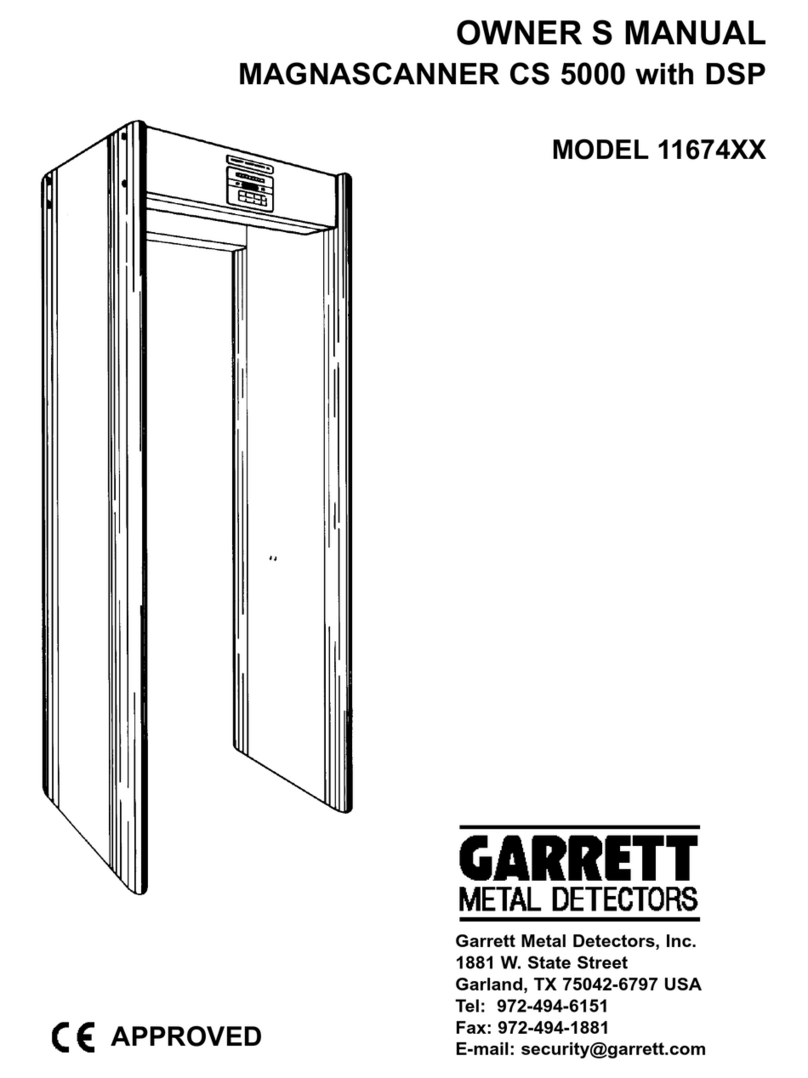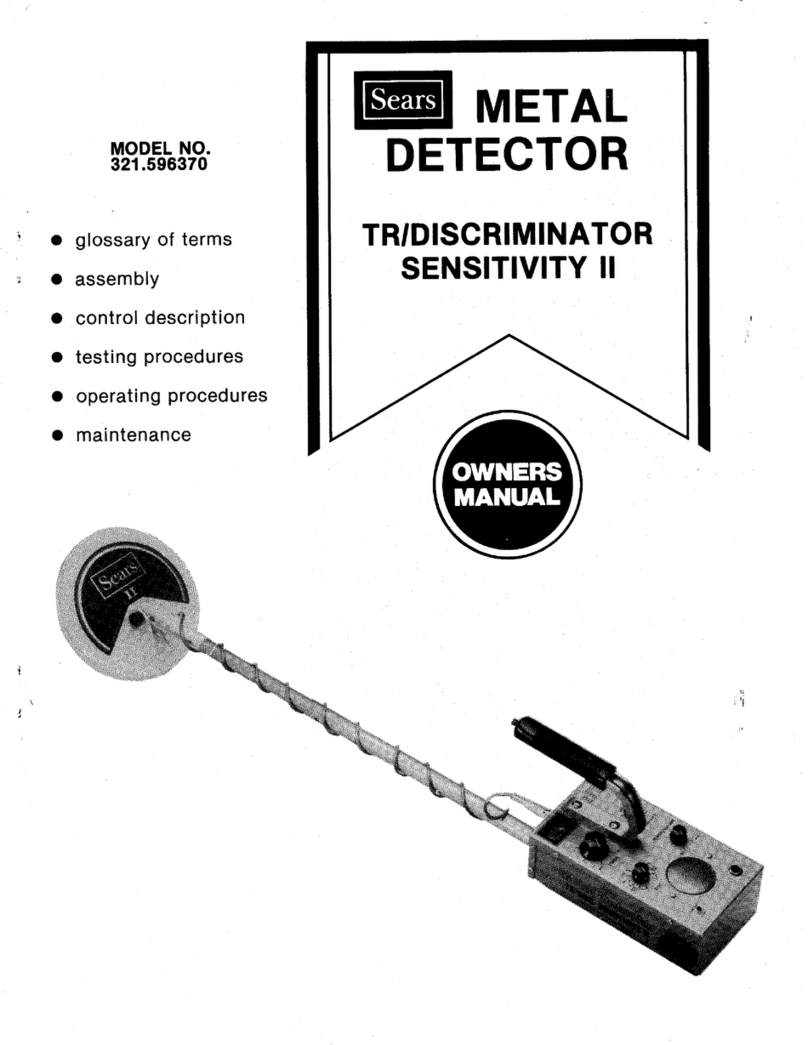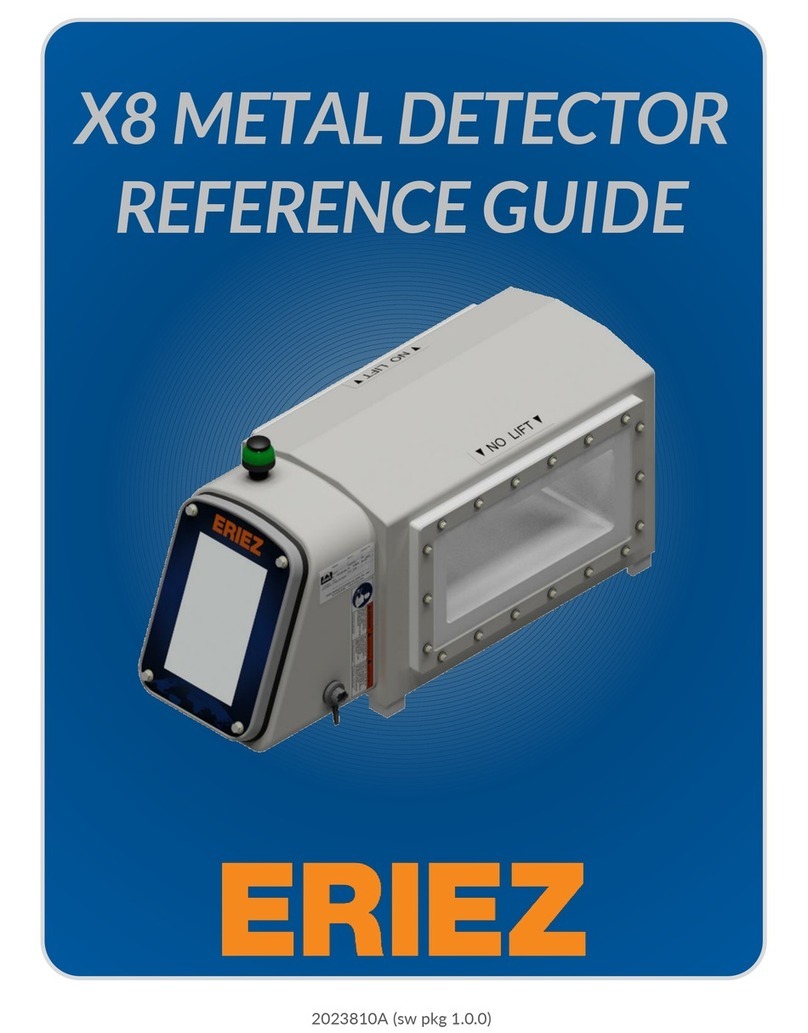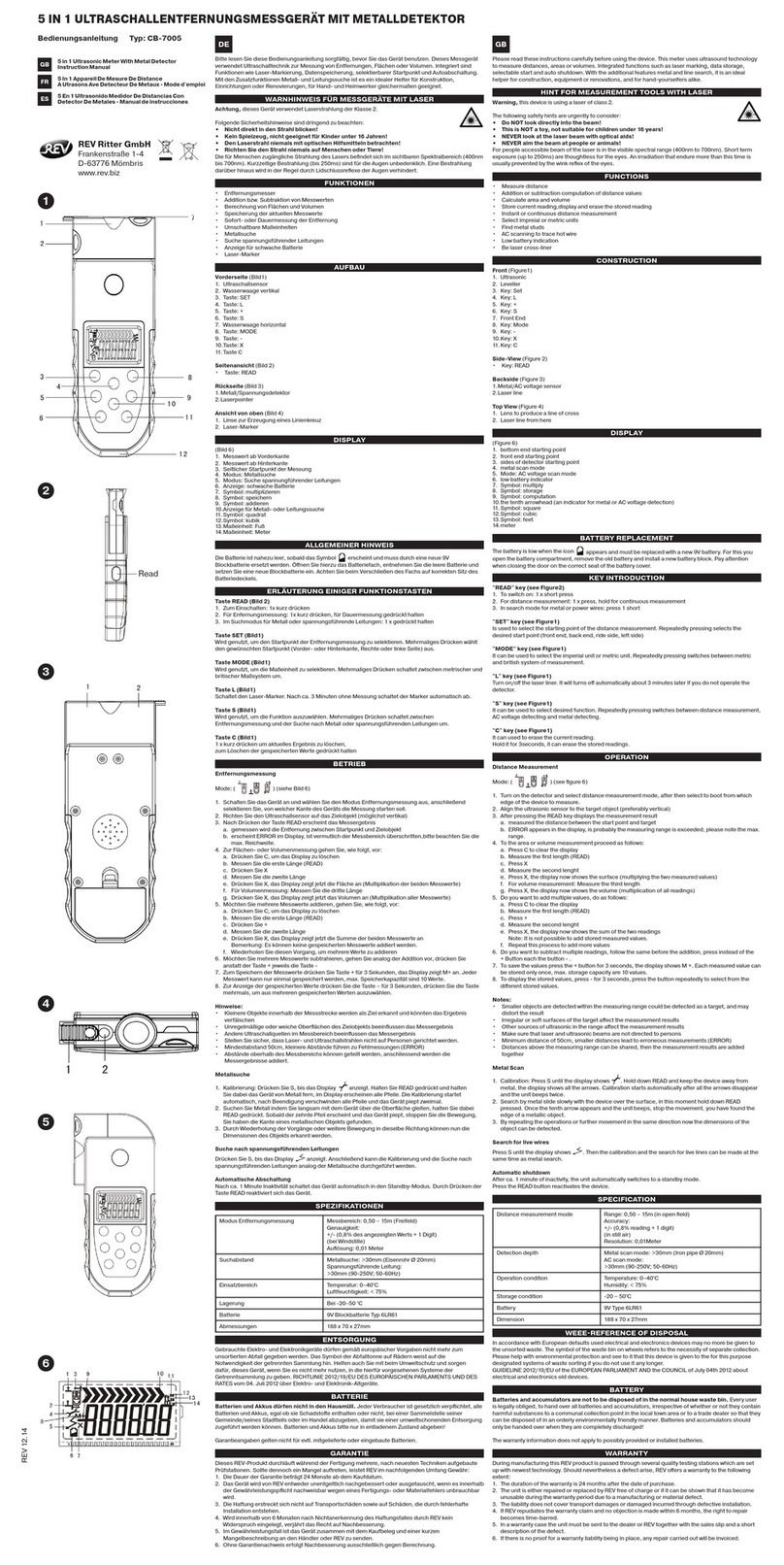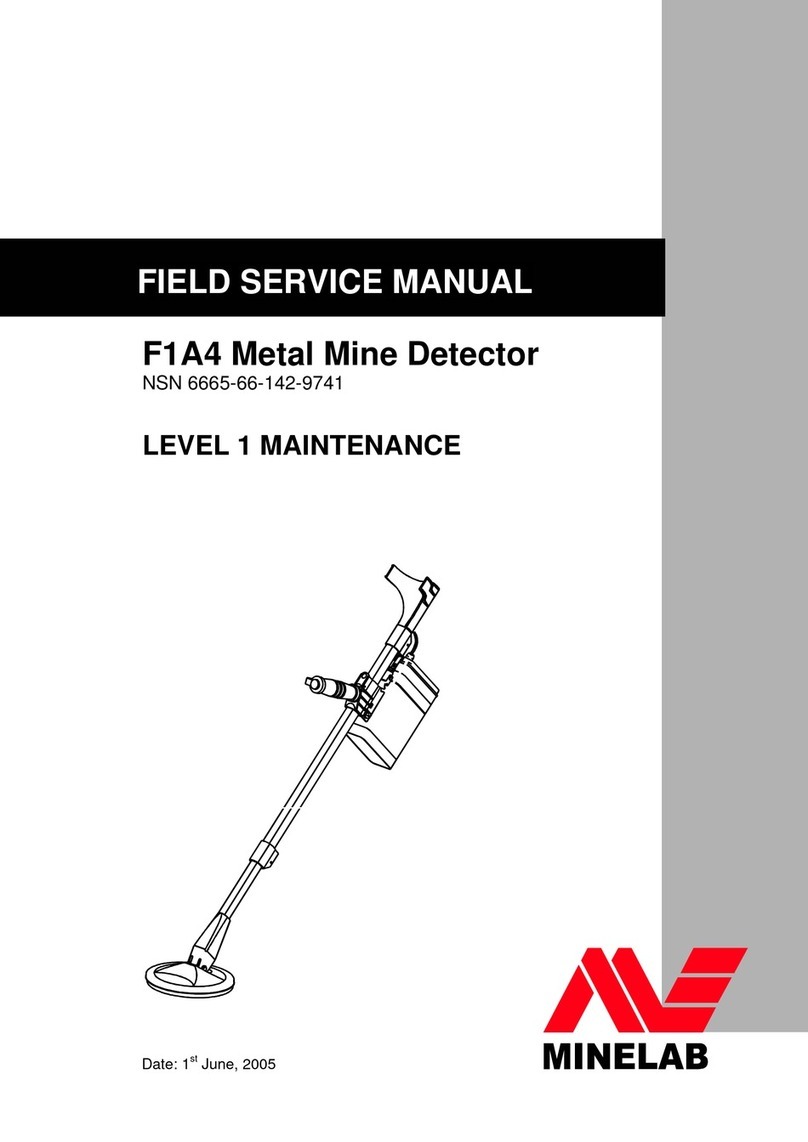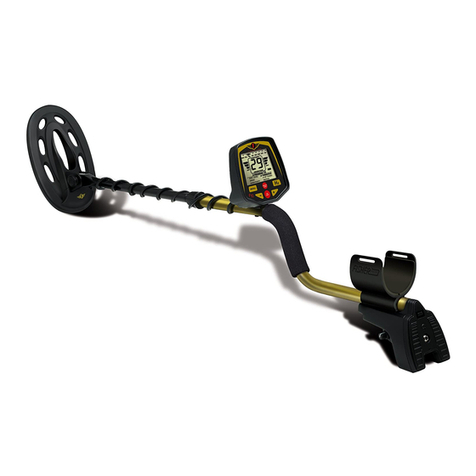10 19
DEPTH & TARGET DISPLAY
READING THE DISPLAY
The display shows the PROBABL
identification of the metal detected, as
well as its PROBABL depth.
The detector will register a target upon
each sweep of the searchcoil, when a
buried target has been located and
identified. If, upon repeated passes
over the same spot the target
identification reads inconsistently, the
target is probably a trash item. With
practice, you will learn to unearth only
the repeatable signals.
Target-ID numbers, as indicated on the
Coin Reference chart (page 17), are
highly accurate when those items are
detected. However, there are many
other metallic items that will register
within these groups, so identification is
not always accurate. Multiple targets
in close proximity to each other,
especially if one is above the other in
the soil matrix, can display non-typical
ID and Depth, or “mask” out the
deeper target altogether. The greater
the distance between the target and
the searchcoil, the less accurate the
target identification.
Depth indication in the Pinpoint mode
is accurate on coin-sized objects as
defined in the category groups, but it
too can be inaccurate if multiple targets
of varying depth and conductivities are
in close proximity of each other.
GOLD TARGETS Gold objects will
generally register in the “GOLD” group
with smaller items in groups 2 & 3 and
larger items in groups 4 & 5. Gold
flakes will register under iron.
SILVER TARGETS: Silver objects will
register in the “Silver” group, A U.S.
dime will ID in group 6, a US quarter in
group 7, a U.S. half dollar in group 8
and a U.S. dollar in group 9.
1-19. All sizes of iron objects
will register on the far-left side of the
scale. This could indicate a
worthless item such as a nail, or a
more valuable historic iron relic.
20-29. Aluminum foil, such as
a gum wrapper, will register as foil. A
small broken piece of pull tab may
also register here.
30-39. U.S. Nickels, most
newer pull-tabs from beverage cans,
the type intended to stay attached to
the can, will register here. Many gold
rings will also register here.
40-49. Many medium-sized
gold rings also register here. A few
newer pull-tabs and many gold rings
will also register here. S-CAP: Older
screw caps from glass bottles and
large gold rings (like a class ring)
could also register here. Some non-
U.S. coins of recent vintage will also
register here.
5. EMI (Electroma netic Interference)
The searchcoil produces a magnetic field and then detects changes in that
magnetic field caused by the presence of metal objects. This magnetic field
the detector creates is also susceptible to the electromagnetic energy
produced by other electronic devices. lectric fences, cell phones, cell phone
towers, power lines, microwave ovens, lighting fixtures, TVs, computers,
motors, etc., all produce MI which can interfere with the detector and cause
it to beep erratically.
The S NSITIVITY control lets you reduce the strength of this magnetic field
and therefore lessen its susceptibility to MI. You may want to operate at
maximum strength, but the presence of MI may make this impossible. If you
experience erratic behavior or “false” signals, reduce the sensitivity.
THE BASICS OF METAL DETECTING
(Continued)
Sweep Method
Sweep the detector side-to-side over
the ground.
Keep the searchcoil parallel to the
ground as you sweep; do not lift the
searchcoil at the ends of your sweeps.
Searchcoil motion is required for target
detection.
USING THE DETECTOR
This detector is equipped with an 11” triangulated elliptical concentric
waterproof searchcoil. This lightweight, ruggedly constructed searchcoil
can be fully submerged into water. The bottom portion of the pole assembly
can also be submerged, but the control housing and the searchcoil cable
plug connection into the housing must not be submerged. The
weatherproofing on the F44 was designed to allow hunting in inclement
weather but it was not designed to withstand submersion in water.
Accessory searchcoils are also available for purchase; see back cover or
visit www.fisherlab.com. A smaller searchcoil offers more precision and fits
into tight spaces. Larger searchcoils provide for more ground coverage on
each sweep and penetrate deeper into the ground. Biaxial searchcoils
provide better penetration in mineralized soils.
11 WATERPROOF SEARCHCOIL
